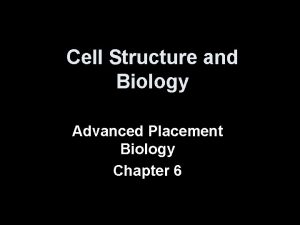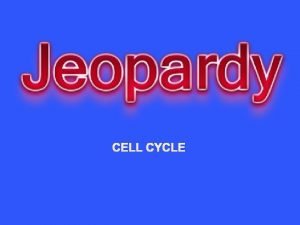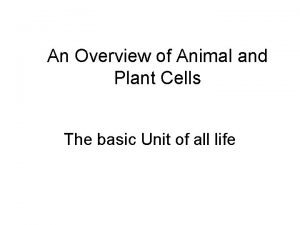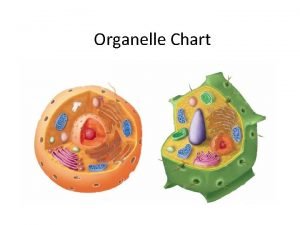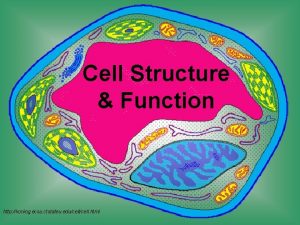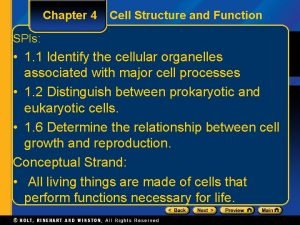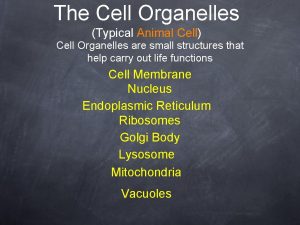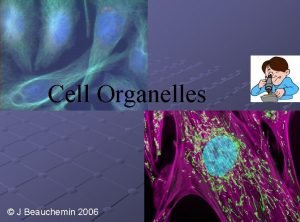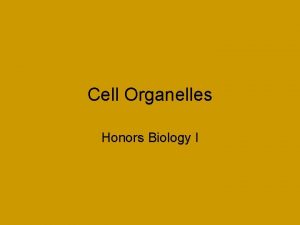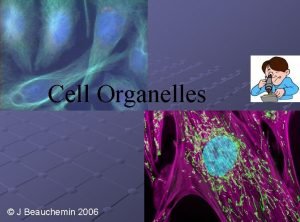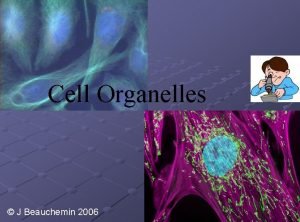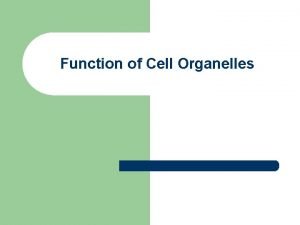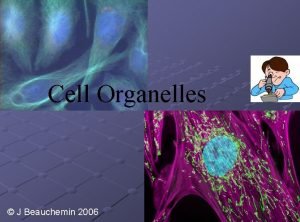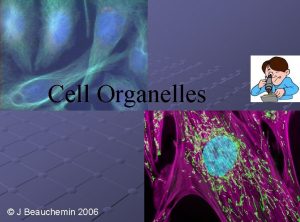Cell Organelles Mr Jones 1713 CA Content Standard











- Slides: 11

Cell Organelles Mr. Jones 1/7/13 CA Content Standard: 5. a Students know plants and animals have levels of organization for structure and function of cells

Welcome Back • I hope you had a great break • Any stories from the break? • Any more science camp letters?

What is a cell? • The basic unit of structure and function in living things

Organization of a Cell • Just as the human body is made of organs, so is a living cell • Organs in a cell are known as “organelles” • A tiny cell structure that carries out a specific function within the cell

Nucleus • The nucleus of the cell is the cell’s control center, directing all of the cell’s activities

Ribosomes • Small organelles where protein is produced

Mitochondria • The mitochondria release most of the cell’s energy • Known as the cell’s “powerhouse” because they convert energy in food molecules to energy the cell can use to carry out its function

Endoplasmic Reticulum • A maze of passageways that help form proteins and other materials • They also carry material throughout the cell

Golgi body • Organelles that transport materials • Also known as the cell’s “mail room” • Receive proteins and other newly formed materials from the endoplasmic reticulum • Distribute the package and materials to other parts of the cell • Also receive materials outside the cell

Vacuoles • Storage areas of cells • Plants have one large central vacuole • Animal cells do not have central vacuoles Plant Cell Animal Cell

Lysosomes • Break down large food particles into smaller ones • Also break down old cell parts and release the substances so they can be used again (recycle) • Are the janitors of the cell
 Prantsuse kirjanik 1713-1784
Prantsuse kirjanik 1713-1784 Portsmouth agreement
Portsmouth agreement How many wars did louis xiv wage between 1667-1713
How many wars did louis xiv wage between 1667-1713 Label the organelles in the composite cell
Label the organelles in the composite cell During interphase a cell grows duplicate organelles and
During interphase a cell grows duplicate organelles and Plant cell
Plant cell Nuclear membrane facts
Nuclear membrane facts Cell organelle song
Cell organelle song Nucleoid region
Nucleoid region Cell organelles
Cell organelles Cell organelles study guide answer key
Cell organelles study guide answer key Which of the following pairs contains unrelated items?
Which of the following pairs contains unrelated items?



